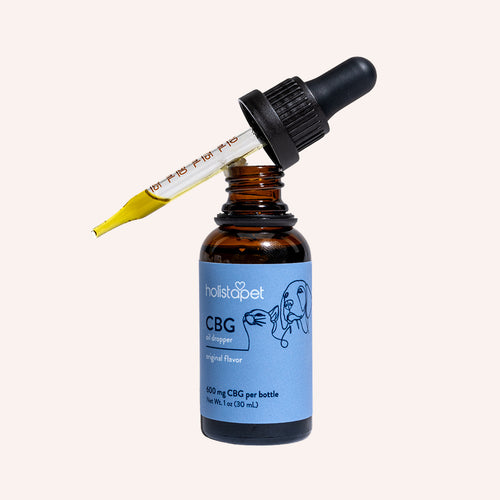So, why do dogs cry for no reason? It's a common question among dog owners, and let's be real—hearing those soft cries tugs at the heartstrings.
The truth is, our canine friends don't cry without a reason. There's always something behind those puppy eyes and whimpers. It could be attention-seeking whining, a sign of anxious feelings, or something else entirely.
Understanding what's causing your dog's behavior is the first step to making your furry friend happy and calm again. So, let's break it all down and figure out why your pup's tears seem to come out of nowhere.
Understanding Why Dogs Cry

Dogs cry as their way of communicating with you, plain and simple. They don't have words, so those whines, whimpers, and soft howls do the talking. Whether they're excited, scared, or just plain bored, it's their way of getting your attention.
But here's the thing: not all crying is the same. There are many different reasons our canine friends whimper. Some of them whine to express emotions, while other dogs try to communicate a deeper issue.
Paying attention to their behavior and the situations when they cry can tell a lot about what they need. Understanding these cues can help you manage excessive whining whenever it strikes.
Emotional Reasons Dogs May Cry
Dogs are pretty emotional creatures. Their crying often stems from how they feel in the moment. Here are some of the most common reasons:
- Separation Anxiety. Dogs can get upset when left alone, especially for long periods. This can lead to excessive whining as they long for your presence.
- Attention-Seeking Behavior. Sometimes, your dog just wants your undivided focus. See if they want some belly rubs, playtime, or a treat.
- Excitement or Anticipation. Big events like a walk, car rides to the park, or seeing their favorite person can lead to adorable, excited cries.
- Fear or Stress in Certain Situations. Loud noises, new environments, or unfamiliar people can make your pup feel scared or uneasy.
- Boredom. Without enough mental stimulation, dogs might whine out of frustration or sheer boredom.
Anxiety or Stress
Anxiety and stress are big culprits when it comes to your dog's crying. These big feelings can make your dear pet vocalize their unease. For them, crying is like waving a flag that says, "Hey, I'm not okay!"
You might notice other signs like pacing, trembling, or hiding. In some cases, these emotions can become too much, especially if your dog is naturally more fearful or nervous.
Pay attention to what's happening around them when the whining starts. Doing so can give you clues about their triggers. Once you figure out what's bothering them, you can take steps to help them feel more secure.
Seeking Attention or Companionship

Attention-seeking is a common reason for those dramatic cries. This is especially true if a dog has learned that whining gets them what they want. Think snuggles, treats, or playtime. Who can resist those cute puppy eyes, right?
Dogs are social animals, and they need their family. If they feel ignored or lonely, they might whine to remind you they're there and ready for some love. Their crying is their way of saying they need you, whether to play with their favorite toy, get some belly rubs, or just sit by your side.
Carefully responding to their attention-seeking whining is crucial. You'll want to stop unwanted behaviors while keeping your bond strong.
Physical Causes of Crying in Dogs
When your dog is whining, it could also point to something physical instead of emotional. Look out for these signs:
- Illness or Discomfort. Whining might be your dog's way of saying they're feeling sick.
- Joint Issues or Soreness. Aging dogs or those with mobility problems might cry due to tenderness or difficulty moving.
- Sensory Challenges. When their eyes or ears start to fail, your pup can get agitated and start crying.
- Injuries. Dogs whine when they experience pain due to injuries, even minor ones. Look for limping, licking, or other signs of unease.
- Potty Needs. Sometimes, it's as simple as needing to go outside for a potty break.
Illness or Pain
Illness or discomfort is one of the most common physical reasons for whining. Dogs rely on these sounds to communicate their needs when they have issues like tummy aches, sore joints, or more serious medical conditions.
Watch for other red flags, like changes in appetite, energy levels, or unusual behavior. If your pooch seems extra clingy or whines for long periods, it's worth a closer look. Sometimes, the issue could be minor, but other times, it might need a trip to the veterinarian.
Sensory Issues, Such as Hearing or Vision Loss
Sensory changes can be scary for your dog. Imagine how confusing the world becomes when familiar sounds and sights start to fade. For your pet, whining is a way to express that something feels off.
You might notice your dog bumping into furniture, not responding when you call, or acting startled by sudden movements. These changes can make them feel anxious or terrified, leading to crying.
Sensory issues are more common in older dogs but can happen at any age. A vet check-up can help identify these problems and guide you in creating a more comfy space for your furry friend.
How To Identify the Cause of Your Dog's Crying
Figuring out why your dog is crying could sometimes feel like solving a mystery. Keep your eyes open, though, because their actions offer plenty of clues.
Start by observing when the whining happens and what's going on around them. Timing, triggers, and patterns can reveal whether the cause is emotional, physical, or something else entirely.
Look out for additional signs, such as body language, appetite changes, or avoidance behaviors. These can also point you in the right direction.
Once you've gathered some clues, it's easier to determine if your dog needs more attention, extra playtime, or a trip to the vet clinic. Understanding their signals is the key to helping them feel calm and cared for.
Observing Behavioral Patterns
By paying close attention to your pet's actions, you can uncover what's behind their whining. Are they pacing? Do they cry more during certain situations, like car rides or crate time? These patterns can reveal emotional or physical triggers.
Take note of how your dog interacts with you and their environment. Are they seeking attention, avoiding activities, or showing fear? Small details like how they sit or react to noises can help you pinpoint their needs.
Keeping a journal of their behavior can also help you track patterns. By having it all on paper, you can get a clearer picture of what's really going on. Observing closely is a vital step in making them feel better.
Consulting With a Veterinarian
Veterinary professionals are the best resource for understanding your canine companion's crying. They can assess whether your pet's whines stem from a medical condition, sensory issues, or even emotional reasons. A quick consultation can save you from playing the guessing game.
Be prepared to share details about your dog's behavior, including when the crying happens, how long it lasts, and any other details you've noticed. Your veterinarian can run tests, check for pain, and offer guidance on the next steps.
Whether it's a health issue or something simpler, your veterinarian's expertise ensures your dog gets the care they deserve. Don't hesitate to reach out! It's better to be careful than to overlook something important.
Natural Solutions To Soothe a Crying Dog
Helping your crying dog feel better doesn't always require a big fix. There are plenty of natural ways to soothe their nerves and address their needs. Small changes through these holistic solutions can make a big difference:
- Provide Mental Stimulation. Puzzle toys, training games, or new activities keep their minds busy and reduce boredom.
- Create a Comfortable and Secure Environment. A quiet, safe space helps ease their anxiety and promotes relaxation.
- Use CBD Products. Cannabidiol has natural soothing properties that can help your pet relax and feel at ease.
- Stick to a Routine. Regular feeding, walking, and play schedules help your dog feel secure and less anxious.
- Spend Quality Time Together. A little extra love and attention go a long way in easing their emotions.
HolistaPet's CBD Options for Calming and Comforting Dogs
HolistaPet offers a range of CBD products designed to soothe your crying pooch naturally. These options contain soothing ingredients to help ease their agitation and bring them back to a relaxed state. Check out our bestselling:
- CBD Dog Treats for Anxiety. These treats are perfect for dogs who need a little extra calm in stressful situations.
- Calming CBD Chews for Dogs. Soft, chewy, and packed with CBD, these chews are ideal for dogs who prefer a gentler treat.
- CBD Tincture Oil for Dogs. Add a few drops to their food or place it directly in their mouth for fast-acting relief.
- CBD Capsules for Dogs. Easy to administer and packed with broad-spectrum CBD for a consistent dose every time.
We craft each product with your dog's well-being in mind. Our offerings are all-natural, gluten-free, vegan-friendly, non-GMO, vet-approved, and third-party lab-tested to bring you peace of mind and your furry buddy soothing relief.
Creating a Comfortable and Secure Environment
Your dog's comfort zone can make all the difference in easing their crying. Start by creating a quiet, cozy space where they feel safe and secure. Having a retreat they can call their own—like their favorite corner of the house or a crate with soft bedding—helps them relax.
Include familiar items, such as their favorite toy or a blanket that smells like you. These comforting touches provide a sense of stability and reassurance.
If loud noises or unfamiliar situations are the trigger, try playing relaxing music or using a white noise machine to drown out the chaos. A peaceful, secure environment can go a long way in helping your dear pet feel more at ease.
Final Thoughts - Why Dogs Cry for No Reason
Your dog's cries might feel like a mystery, but with a little patience and the right approach, you can uncover the reason and bring them peace. From creating a cozy environment to exploring natural remedies like HolistaPet's CBD products, you've got plenty of tools to end their whines.
Remember, every whimper is their way of communicating, and they're counting on you to listen and respond. So, give your pooch the love and care they need, and enjoy the happy days that follow!



 CBD Oil for Dogs - Fast Acting
CBD Oil for Dogs - Fast Acting
 Chicken Flavored CBD Oil For Dogs - Easy Dose
Chicken Flavored CBD Oil For Dogs - Easy Dose
 Salmon Flavored CBD Oil For Dogs - Highly Rated
Salmon Flavored CBD Oil For Dogs - Highly Rated
 CBG Oil for Dogs and Cats - Loved by Thousands
CBG Oil for Dogs and Cats - Loved by Thousands





Leave a comment
All comments are moderated before being published.
This site is protected by hCaptcha and the hCaptcha Privacy Policy and Terms of Service apply.